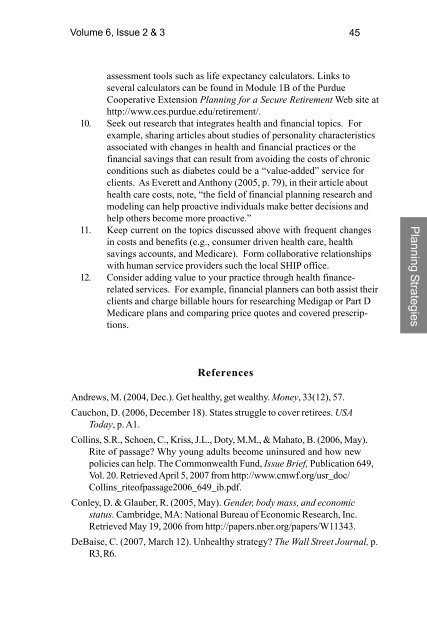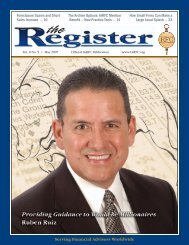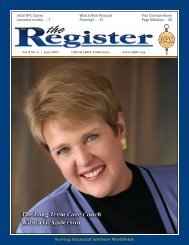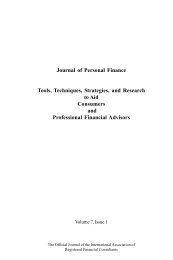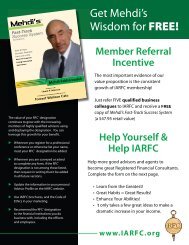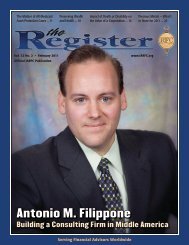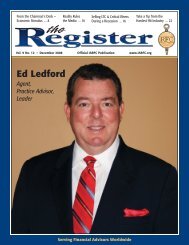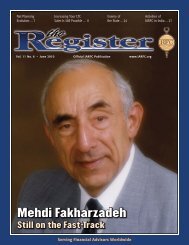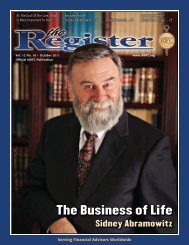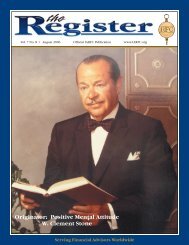3433-vol. 6 issue 2-3.pmd - iarfc
3433-vol. 6 issue 2-3.pmd - iarfc
3433-vol. 6 issue 2-3.pmd - iarfc
You also want an ePaper? Increase the reach of your titles
YUMPU automatically turns print PDFs into web optimized ePapers that Google loves.
Volume 6, Issue 2 & 3 45<br />
assessment tools such as life expectancy calculators. Links to<br />
several calculators can be found in Module 1B of the Purdue<br />
Cooperative Extension Planning for a Secure Retirement Web site at<br />
http://www.ces.purdue.edu/retirement/.<br />
10. Seek out research that integrates health and financial topics. For<br />
example, sharing articles about studies of personality characteristics<br />
associated with changes in health and financial practices or the<br />
financial savings that can result from avoiding the costs of chronic<br />
conditions such as diabetes could be a “value-added” service for<br />
clients. As Everett and Anthony (2005, p. 79), in their article about<br />
health care costs, note, “the field of financial planning research and<br />
modeling can help proactive individuals make better decisions and<br />
help others become more proactive.”<br />
11. Keep current on the topics discussed above with frequent changes<br />
in costs and benefits (e.g., consumer driven health care, health<br />
savings accounts, and Medicare). Form collaborative relationships<br />
with human service providers such the local SHIP office.<br />
12. Consider adding value to your practice through health financerelated<br />
services. For example, financial planners can both assist their<br />
clients and charge billable hours for researching Medigap or Part D<br />
Medicare plans and comparing price quotes and covered prescriptions.<br />
Planning Strategies<br />
References<br />
Andrews, M. (2004, Dec.). Get healthy, get wealthy. Money, 33(12), 57.<br />
Cauchon, D. (2006, December 18). States struggle to cover retirees. USA<br />
Today, p. A1.<br />
Collins, S.R., Schoen, C., Kriss, J.L., Doty, M.M., & Mahato, B. (2006, May).<br />
Rite of passage? Why young adults become uninsured and how new<br />
policies can help. The Commonwealth Fund, Issue Brief, Publication 649,<br />
Vol. 20. Retrieved April 5, 2007 from http://www.cmwf.org/usr_doc/<br />
Collins_riteofpassage2006_649_ib.pdf.<br />
Conley, D. & Glauber, R. (2005, May). Gender, body mass, and economic<br />
status. Cambridge, MA: National Bureau of Economic Research, Inc.<br />
Retrieved May 19, 2006 from http://papers.nber.org/papers/W11343.<br />
DeBaise, C. (2007, March 12). Unhealthy strategy? The Wall Street Journal, p.<br />
R3, R6.


